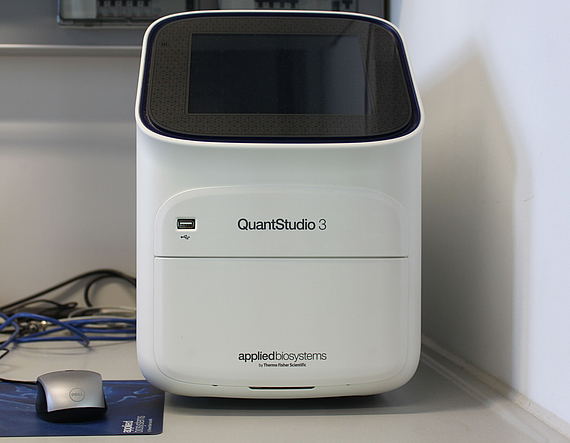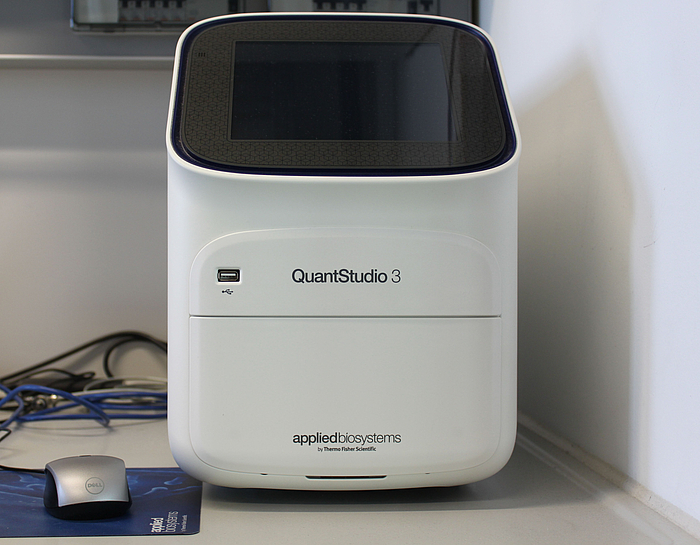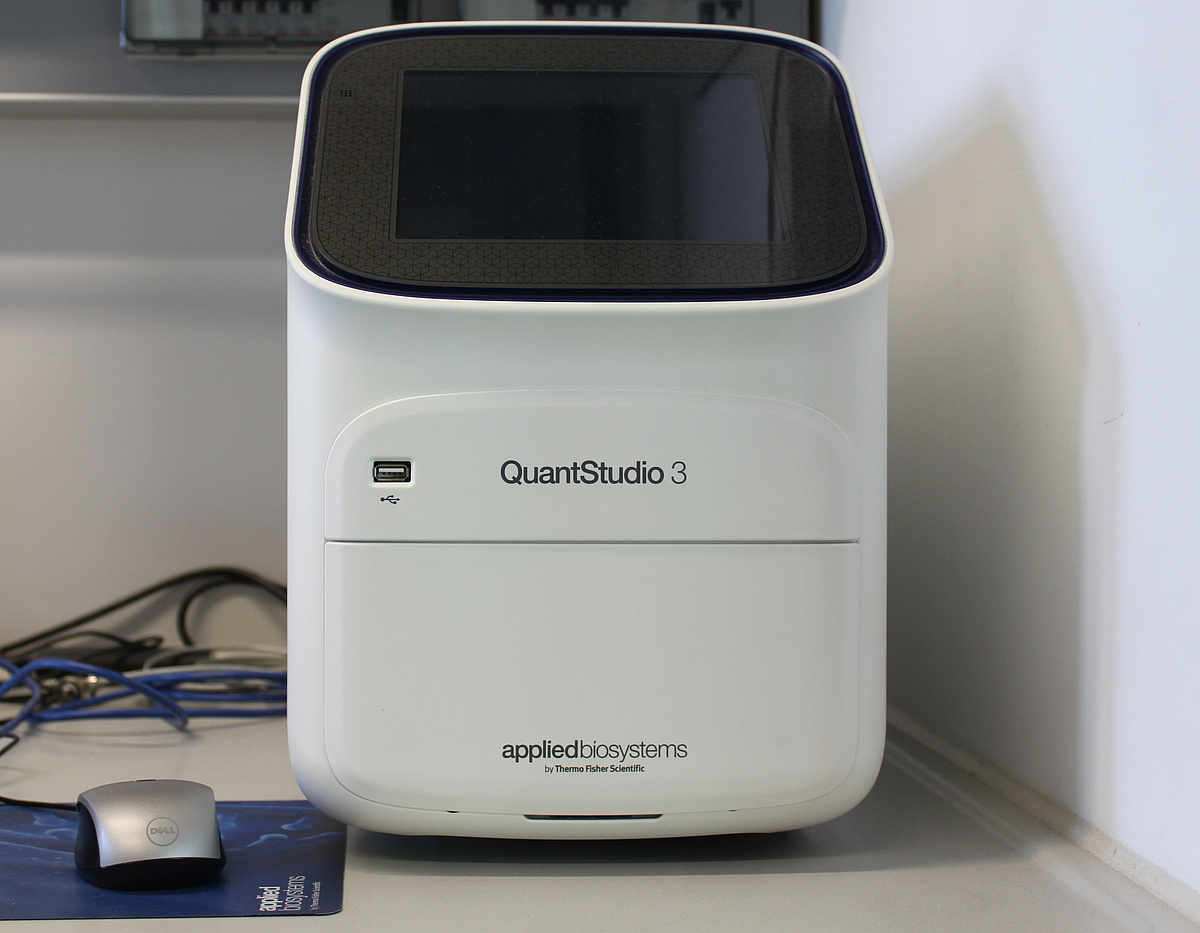Thermo Q-Exactive Plus Orbitrap Mass Spectrometer coupled to Ion Chromatography or HPLC
The combined Quadrupole Orbitrap Mass Spectrometer enables the determination of metabolite masses with high precision. After the chromatographic separation, analytes are first selected using a quadrupole mass filter, then optionally fragmented in a collision cell and subsequently the ion masses are determined very precisely in the Orbitrap MS. In this way, the identity of a metabolite can be clarified with high certainty even without the availability of a pure standard. The machine also provides an isotope pattern for each metabolite, which further ensures the identification of the analytes. Differences in the metabolite patterns of plants, which arise e.g. through growth under different environmental conditions or through genetic differences, can be recorded quantitatively without having to determine a priori which metabolites should be analyzed.
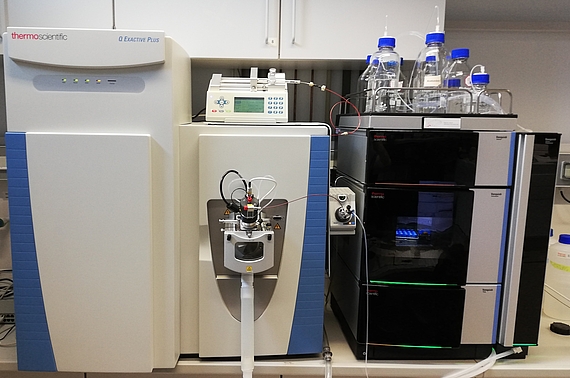
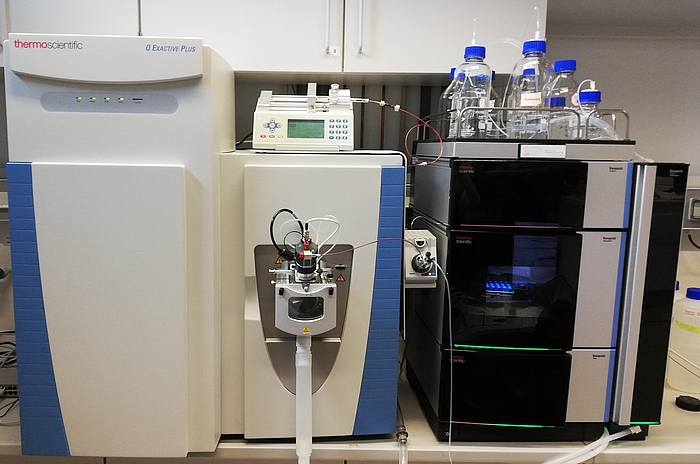
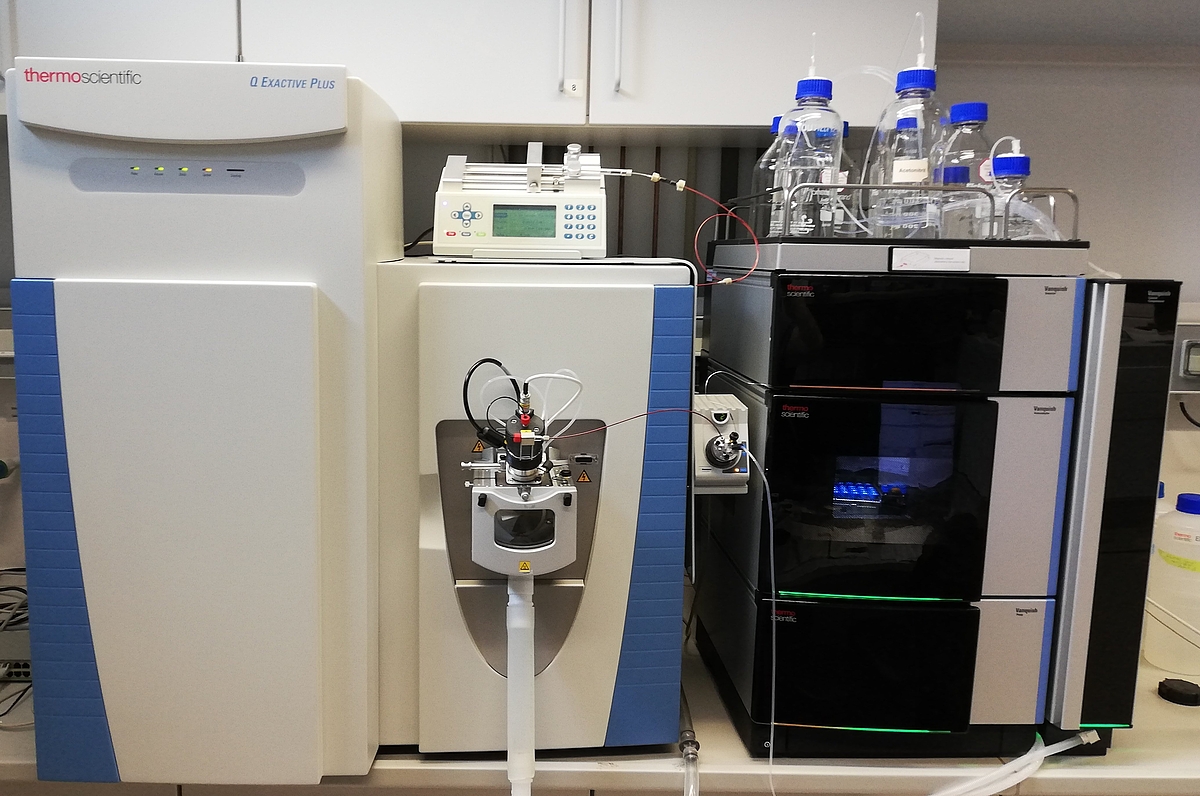
Triple Quadrupole Mass Spectrometer
The high pressure liquid chromatography coupled to a triple quadrupole mass spectrometer enables the identification and sensitive quantification of metabolites based on their mass and the mass of their fragments, which are generated in a collision cell.
Triple Quadrupole Mass Spectrometer
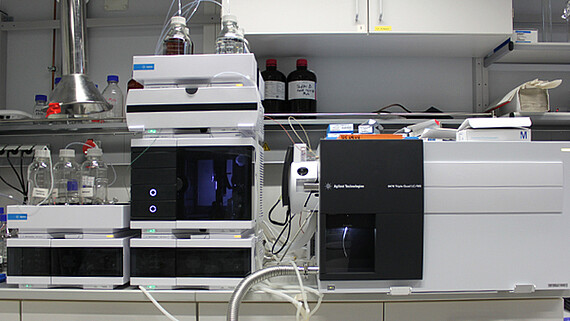
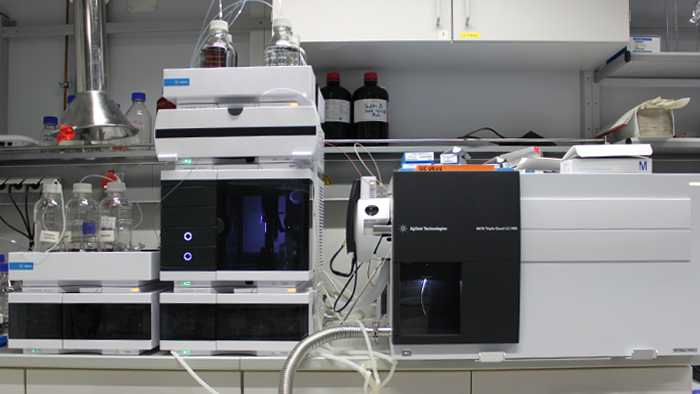

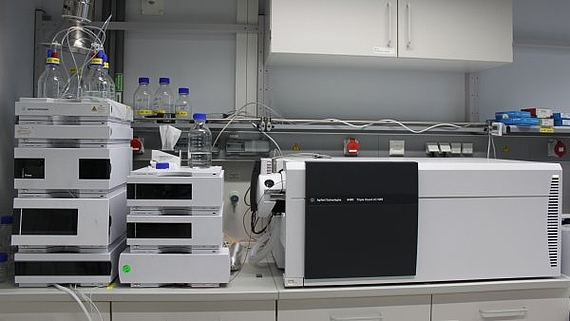
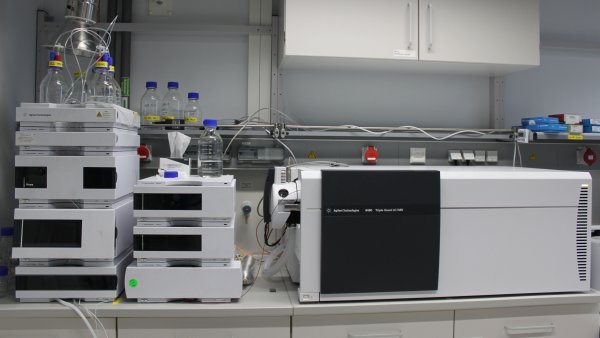

Leica SP8 Confocal Laser Scanning Microscope
The confocal microscope allows the detection of fluorescent signals in biological samples. The fluorescence is elicited by laser light. Our upright microscope has four solid state lasers with the wavelengths 448, 488, 514, and 552 nm. The fluorescence light can be detected by two photomultiplier tubes and two high-sensitivity HyD detectors.
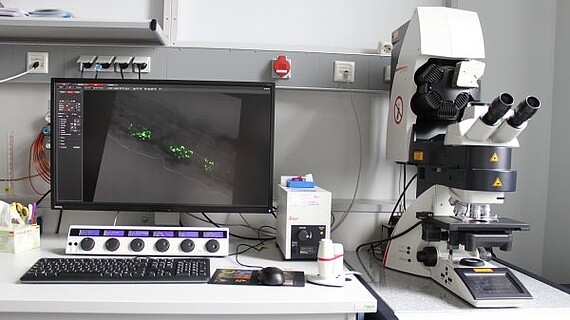
GE Healthcare ÄKTA Pure Protein Purification System
The Äkta pure is a liquid chromatography system, which facilitates the purification of proteins from complex biological samples. The machine is equipped with a conductivity and a UV-VIS detector as well as a fraction collector to isolate fractions of the chromatography, which can then be analyzed by other methods.
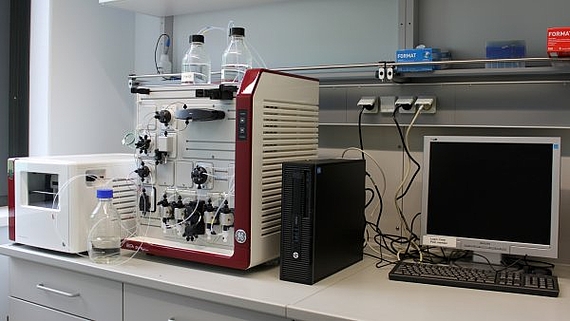
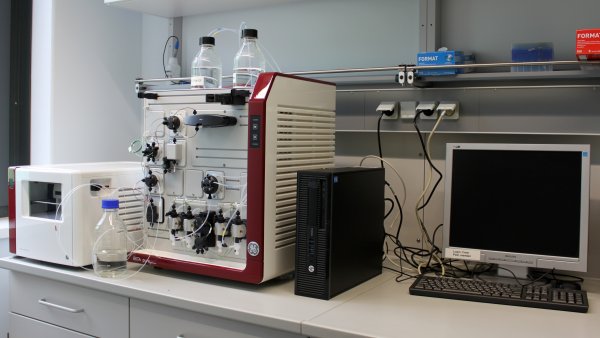

Nikon SMZ25 Fluorescence Stereomicroscope
The Nikon SMZ25 is a fluorescence stereo microscope with a high resolution at a zoom factor of 0.63x (entire 35 mm petri dish visible) up to 15.75x (25:1). With an automatic control of the z-axis precise z-image stacks can be generated, which can be integrated by the software to clear images with high depth of focus.
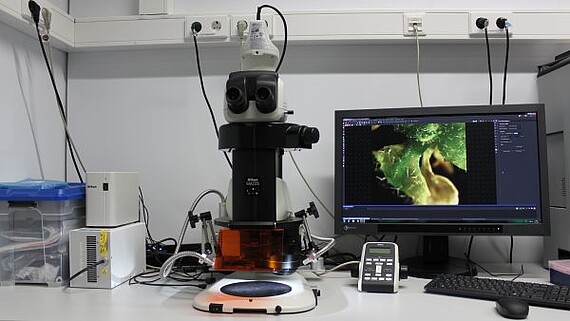
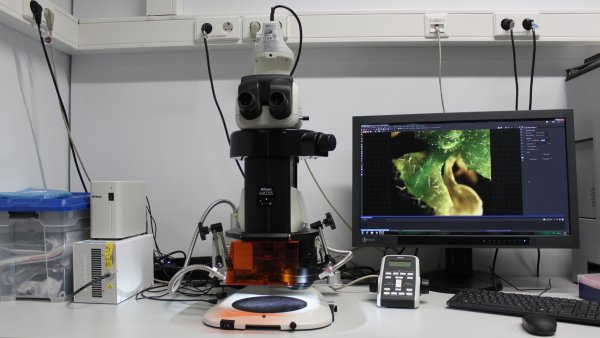

CNS-Analyzer
The CNS-Analyser is used for the quantification of carbon, nitrogen and sulphur in dried plant material or dried soil samples.
The weighed sample is burned in a combustion tube under oxygen supply. Helium is used as carrier gas. The combustion products (NOx, CO2, SOx) will be reduced in a reduction tube to defined gases (N2, CO2, SO2). Water and halogens will be removed by chemical adsorption. CO2 and SO2 will be intermediately bound on columns. The thermal conductivity detector of the machine will first quantify the N2 content. Then CO2 will be desorbed from the column by heat and measured. Eventually SO2 will be desorbed and measured.
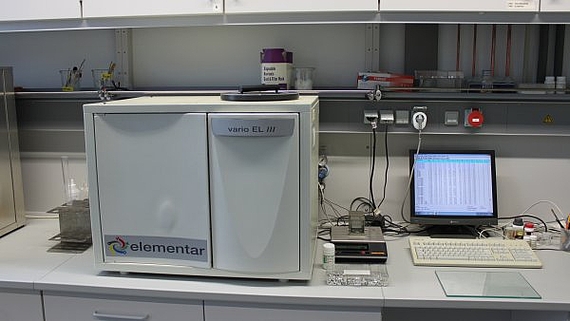


Applied Biosystems Capillary Sequencer 310
The capillary sequencer is used to determine the size of PCR fragments in the analysis of CRISPR / Cas9 editing events in plant genes. Since edits are often accompanied by small insertions or deletions, a change in the size of a PCR fragment indicates an editing event. The change in size can be precisely determined to the base pair.
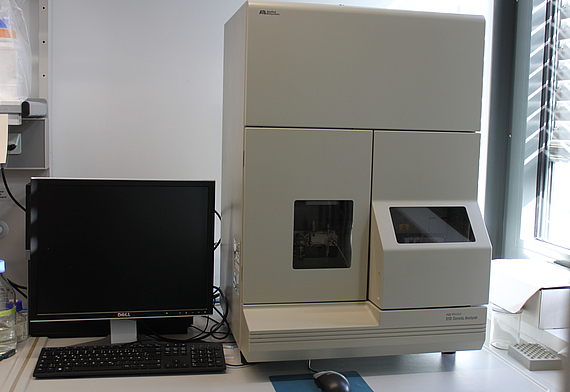
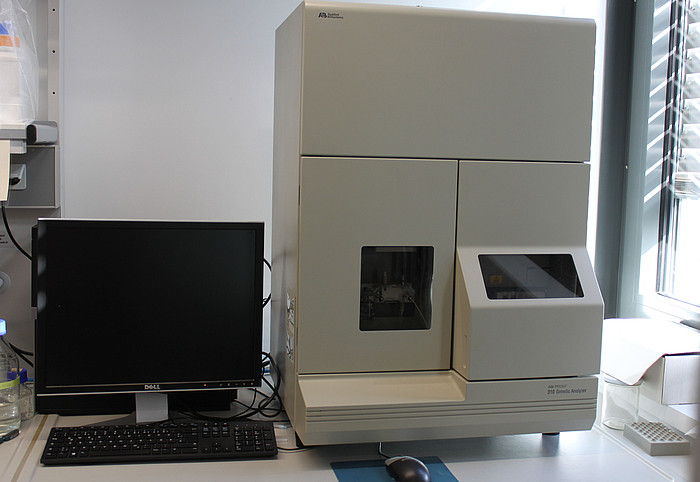
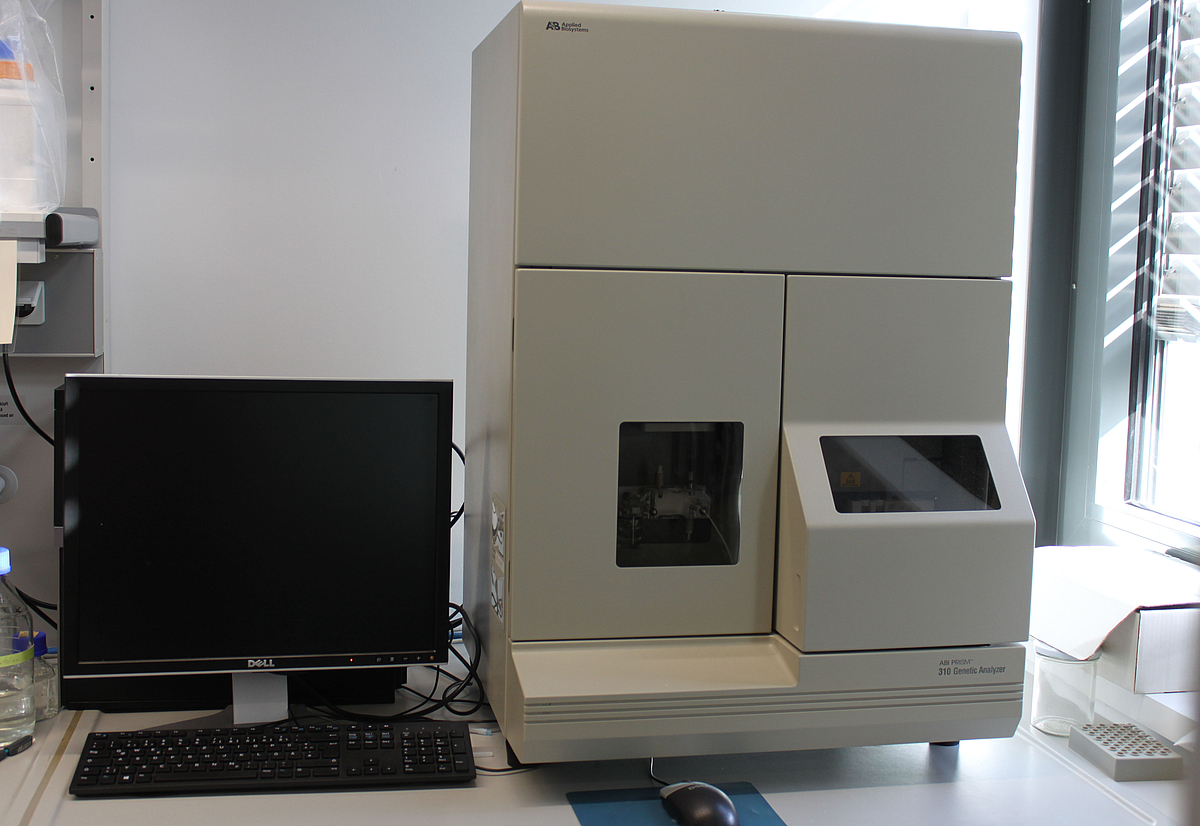
Applied Biosystems Quant Studio 3
The device can be used for the quantitative determination of mRNA transcripts (RT-PCR). In addition, sequence variants in a PCR product can be detected qualitatively using DNA melting curve analysis. For example, mutations in a gene that were introduced by CRISPR / Cas9 can be detected.
